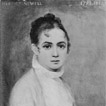Three Missionary Wives
the Martyr, the Heroine, the Forgotten

The motto of every missionary, whether preacher, printer, or school master, ought to be “devoted for life.” –Adoniram Judson
Although five young men were commissioned as missionaries on February 6, 1812, considerable interest was concentrated on the three young wives who were so publicly expanding expectations of the role and capabilities of women in missions. Prevented by cold weather, distance and preparations for her imminent marriage to Samuel Nott, Roxana Peck of Franklin, Connecticut was the only one unable to attend the ordination at Salem.
Roxana was twenty-seven years old at the time she married Samuel Nott the week after the Salem commissioning service. Ann “Nancy” Hasseltine Judson of Bradford, Massachusetts was twenty-three and had married Adoniram the day before the commissioning. The darling of the three was Harriet Atwood of Haverill, Massachusetts – beautiful, delicate and only eighteen years old. She married Samuel Newell just days after the commissioning.
After their departure for India on two different ships, the lives of the first three missionary women, intertwined by fate and the public imagination, took surprisingly different turns. Each in her own way became a model for the practice of women in mission. United at first by circumstances, by similar spiritual experience, and by shared goals, the lives of Harriet, Ann and Roxana demonstrated how a range of hard realities could reshape mission theory and dictate practice.
Harriet Newell
The Newells and the Judsons arrived on the Caravan in Calcutta in June of 1812. Because of the War of 1812 between Britain and the United States, as soon as the British East India Company learned of the presence of American missionaries, it issued expulsion orders. Since Harriet was several months pregnant, the Newells were the first to leave on a ship that had only two berths. On July 29, they boarded a ship bound for the Isle of France. But a proposed voyage of six weeks stretched into a nightmare of three months after the ship sprang a leak. Harriet contracted dysentery, and in early October went into premature labor and bore a daughter on shipboard. The baby died after exposure to a severe storm at sea. Twenty days after her arrival on the Isle of France, Harriet died of consumption made worse by the same storm that killed her baby. Her grieving husband wrote her family, describing her last sufferings and telling them that Harriet never regretted becoming a missionary for Christ. Her short life of selfless sacrifice profoundly impacted many in the homeland.
Ann Judson
Ann and Adoniram spent 1812 and most of 1813 wandering – emotionally, literally, and theologically. Seeking to evade deportation from India and searching for an alternative mission field, in late 1813 they obtained passage to Burma and settled in Rangoon. Ann’s goal for her own ministry in Burma was to open a school for children. After acquiring facility in the language, Ann assisted Adoniram in his translation work by translating several tracts, and the books of Daniel and Jonah, into Burmese. Ann’s early accomplishments as a missionary wife were phenomenal, even with the heartbreaking loss of two children. In 1822 her health broke and she returned to the States for a rest, publishing a book on their pioneering missionary work in Burma. Upon her return, in 1824 Adoniram was imprisoned and tortured. Ann followed her husband from prison to prison and preserved his and several others’ lives by bribing officials and providing food. In 1826, after two years of imprisonment, Adoniram was released. But in October of that year, while Adoniram was away, Ann died at age thirty-eight, worn out from hardships. She spoke her last words in Burmese.
Roxana Nott
The least known of the three was Roxana Nott. Since she was not present at the commissioning in Salem, she longed to meet Harriet and Ann for the first time. Upon her arrival in Calcutta on the Harmony, she discovered that Harriet had already departed for the Isle of France, so the two women would never meet. Roxana met Ann Judson, but as the Judsons were in process of becoming Baptist, there was no possibility of continuing in fellowship with them. Thus Roxana suffered one disappointment after another. She and Samuel were finally granted permission to open the work of the American Board in Bombay in 1813. Within two years, Samuel’s health deteriorated and the couple was forced to return to the United States, arriving in August of 1816. Roxana encouraged other women who aspired to serve as missionaries, but the Notts themselves never returned to the field. Roxana lived a “humble and holy life” as a minister’s wife, finally dying in Hartford at age ninety-one. Despite her role as the first woman connected with the American Board, Roxana Nott was virtually forgotten.
Roxana Nott, the forgotten “failure,” Harriet Newell, the self-sacrificing martyr, and Ann Judson, the activist heroine – were the models of mission provided by the first American missionary wives. The three started out together, but almost immediately the different circumstances of their lives and their individual reactions to their contexts meant that they provided very different images of missionary life to women back in North America.









comments